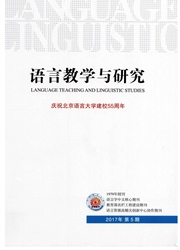
欢迎您!东篱公司
退出

 中文摘要:
中文摘要:
“应该”表达的两种情态与不同的体标记之间存在同现限制关系。“应该”的两种情态与体标记的互动关系可以用“静态”与“动态”、“现实”与“非现实”的概念对立得到统一的解释。
 英文摘要:
英文摘要:
The co-occurrence restrictions exist between the two types of modality expressed by the modal "Yinggai (应该)" and the various aspect markers. The co-occurrence restrictions between modality and aspect markers can be explained unitarily in terms of the concept distinction between static and dynamic, and that between realis and irrealis.
 同期刊论文项目
同期刊论文项目
 同项目期刊论文
同项目期刊论文
 期刊信息
期刊信息
